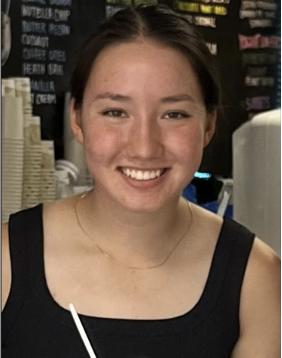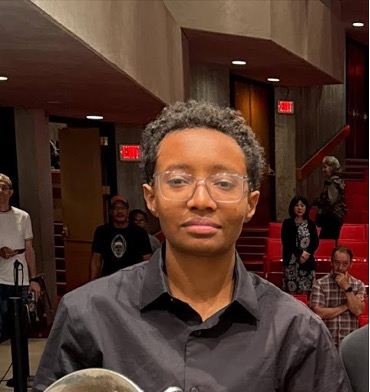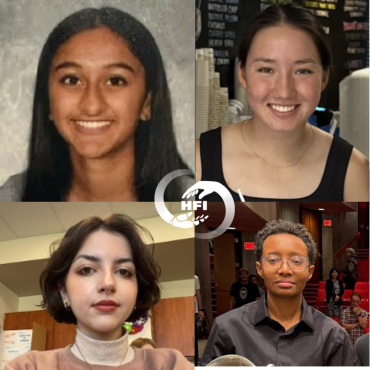Four high school students, including Cait Ahn of Choate Rosemary Hall in Connecticut and three local students: Olivia Bruening of Cleveland Heights High School, Austin Fritzgerald of Hawken School, and Aashvi Jagetia of Hathaway Brown School, spent the summer at the Human Fusions Institute, contributing to the institute’s mission of advancing research and innovation.
Spending the summer in Cleveland for the first time, Ahn, a San Francisco Bay Area native, created parts using Onshape, 3D-printed them in think[box] and made iterations. She designed a wrist mount to attach different hand and arm models and a sensor mount to increase user sensation. Ahn also printed things for others’ projects and is proud of her mastery of Onshape, the development of usable products, and the significant growth and independence she achieved in the design process.

As Ahn prepares to start her senior year of high school, she is eager to apply her new skills to her final season on her robotics team, demonstrating the real-world impact of her summer experience. This experience has not only enhanced her technical skills but also instilled in her a sense of innovation and a desire to apply her knowledge to real-world problems.
Jagetia’s enthusiasm for her work was evident as she described her experience. She primarily worked with McGann and Jakes, mapping joint angles relevant to hand movements used in tasks to the joints of robotic grippers. Using the lab’s Oculus headset, she used hand tracking to find joint angles through testing before analyzing the data using Python. “I thought working with the Oculus headset was so cool because I’ve never really used anything like it,” she said. “It was exciting to have the chance to use it and play around with it a bit.” On a typical day, she used the headset to test, made edits to the code, and ran the Unity program to check for errors and troubleshoot to correct any errors. She was fascinated by the programming language and all the software she learned to use, including C#, Python, and ROS2.

“I really enjoyed working in this field, and I think it’s definitely something I could see myself pursuing in the future,” said Jagetia, who enjoyed the freedom that came with her internship. She looks forward to continuing to research at HFI during the school year throughout her junior and senior years and using her new skills to build robots for her school’s robotics team.
Fitzgerald primarily worked with CWRU Ph.D. student Roberto Peralta. He performed a risk analysis on the Saturn II stimulator, testing each waveform at different pulse widths and amplitudes and tracking their accuracy. After reviewing standards and noting out-of-standard points, he plotted microseconds of each pulse width value. Amid his analysis, he identified a high-density connect and put it in a printed circuit board design so that all 26 channels of the Saturn II could be used at their full potential.
When Fritzgerald began his internship at the beginning of the summer, his coding knowledge was limited. He quickly learned to use MATLAB to plot, identify patterns, and memorize commands. “It was extremely rewarding to see my code turn into a plot right before my eyes.” His rapid growth and learning over the summer testify to his dedication and hard work.

Fritzgerald looks forward to starting his senior year by presenting his work over the summer at his school’s science fair. “The work at HFI is fascinating,” said Fritzgerald, who enjoyed learning about other projects in the lab, especially virtual reality. “I am very proud to be involved in such amazing work as a high school student. My academic journey is just beginning, and I will forever be grateful for the opportunity to have an experience like this.”
Mentored by Ph.D. student Margaux Randolph, Bruening came to HFI as part of CWRU’s Research Immersion in Brain, Spinal Cord, & Peripheral Nerves program for high school students. Her main project was working in a dry lab to compare two doctors’ observations on fascicular anatomy in peripheral nerves. One believed that the fascicles merged and diverged randomly and not in groups, while the other thought they merged in groups. Bruening believed one doctor was more accurate in the sporadic convergence, whereas the other only looked distally at the body.

Having spent her days at HFI segmenting the nerve micro CTs and analyzing different slides, Bruening was “intrigued in seeing how the fascicles merged and diverged within the nerve.” She was also proud of herself for learning how to use new software.
When the new school year starts, Bruening looks forward to thanking her science teacher, who encouraged her to pursue the internship, and encouraging other students to get involved in Summer 2025. “I think the biomedical engineering field is awesome,” she said. “If it weren’t for this program, I never would’ve known how interested in biomedical engineering I would be.”

